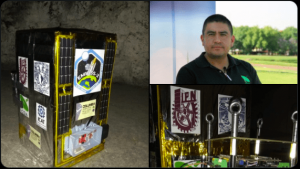MEXICO CITY — Mexican drug gang bosses furious at suspected turncoats sent commandos aided by local police to seize dozens — perhaps hundreds — of people, murder them and dispose of their bodies in a town near the Texas border, yet state and federal officials ignored the massacre for years, according to a government-backed report released Sunday.
The long delay in the investigation makes it impossible to determine just how many people were killed in the town of Allende in 2011, according to the report sponsored by the federal Executive Commission for Attention to Victims. The Coahuila state file lists 42 missing people related to the case. But a Zeta drug gang member told a U.S. court in 2013 that 300 died, though it was not clear if all the deaths occurred in the same incident.
A witness testified that many of the bodies of victims were incinerated to the point of making identification of remains almost impossible.
The report written by Sergio Aguayo, a human rights activist and academic at the elite College of Mexico, is based on testimony gathered by Mexican prosecutors, government and independent human rights organizations, as well as U.S. records.
Allende is a town of about 23,000 people on the crossing of two roads leading to the Texas border, one toward Eagle Pass and the other to Del Rio, making it a strategic drug route — one controlled by the brutal Zetas cartel, which reportedly paid members of the local police force roughly $5,000 a month to cooperate.
According to the report, Miguel Ángel and Omar Trevino, brothers who controlled the Zetas in the region, believed that other gang members had stolen as much as $10 million in drug profits.
Over the weekend of March 18 to 20, 2011, they ordered at least 60 gunmen to hunt down everyone who shared the family name of Garza and kill them. The report says police were ordered to help detain some victims, and otherwise to ignore calls for help.
The report says police and gang members took the victims, including women and children, to two ranches, where they were killed. One Zeta witness said the bodies were burned for hours, “cooked” until nothing recognizable remained.
The gang also encouraged neighbors to loot the homes of the victims, and then destroyed 32 houses, some using bulldozers and other heavy equipment, according to investigators.
The report says the killings may have continued sporadically, nothing the disappearance a year later of four people named Garza: a couple and their two children.
Yet state prosecutors didn’t begin to collect evidence in the case until 2014, the report says.
It says such massacres are not isolated cases, and show the Zetas’ tight connections with local police and mayors, “who in the best of cases were decorative figures,” as well as the indifference or inefficiency of state and federal officials.
It also criticizes the U.S. government for refusing to share some information with Mexican authorities and complains that Mexican prosecutors declined to share information with the Victims’ Rights investigation.
The report also looks at the Zeta murder of 72 migrants, mostly Central Americans, in neighboring Tamaulipas state in 2010.
While that case caused an international uproar, the Inter-American Human Rights Commission chastised Mexican authorities for a response that “oscillated between indifference and opacity.”
Federal records say Coahuila had 1,618 cases of disappeared people in recent years, and Tamaulipas has had 5,701. Nationally, officials acknowledge 27,887, though human rights groups say the true figure is far higher.










